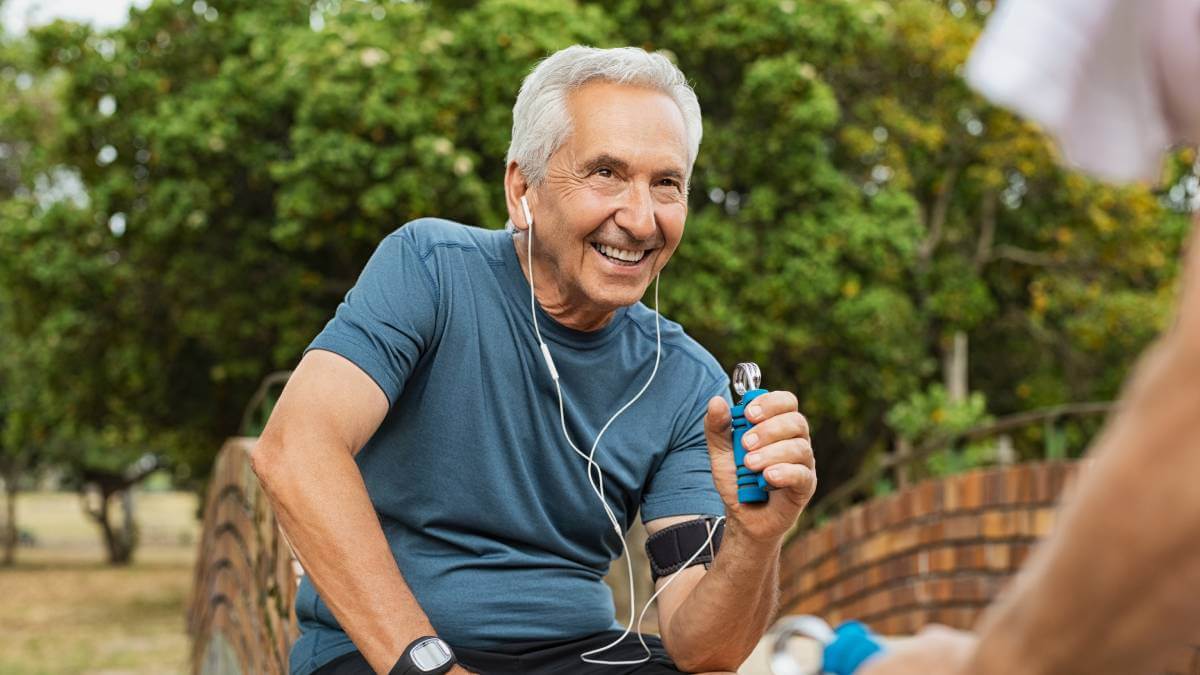As you age, your body undergoes inevitable changes. But while some aspects of ageing are beyond your control, there are proactive measures you can take to maintain your overall health and wellbeing. One often overlooked yet critical aspect of physical fitness is grip strength.
Grip strength is not just a measure of hand power but a key indicator of overall health, and nurturing it can significantly contribute to ageing gracefully.
Many everyday activities – such as playing sports, doing housework, opening jars and even catching yourself to avoid a fall – all require a certain level of grip strength.
What is grip strength?
Grip strength is the force applied by the hand to pull or squeeze an object. This seemingly simple function, however, is supported by a complex interplay of muscles and nerves. Handgrip strength is often measured using a dynamometer, a device that gauges the force exerted when squeezing the instrument.
People’s hands are becoming weaker overall, possibly because of the way smartphones and touch screens are being used, says Dr Erin Nance, a hand surgeon in New York City. Addressing this goes beyond merely working out the small muscles in your hands, though. It also entails engaging the muscles spanning your forearms, upper arms, shoulders and core as they all work together as a functional unit.
How to increase your grip strength
It’s usually not too hard to tell whether or not your hands could use a bit of a workout. Try picking up a heavy cast-iron pan and try to rotate it as if you’re dumping out the contents. Or, take a minute to support your body weight with your hands in a push-up position. If either of these feels difficult, then grip training should be part of your workout routine.
According to experts, the most effective exercises for enhancing grip strength are those that involve multiple muscle groups, replicating the motions we perform in our daily lives.
An example of this is the farmer’s carry – where you hold a heavy object in each hand while walking – as this technique not only helps to strengthen your hands but also engages other parts of your body such as your core, arms, shoulders and back.
To start, try using five-kilogram kettlebells or dumbbells, or any weight that makes you want to walk a bit faster. Full water jugs with handles also work. Begin by performing two or three sets of 30 – 60 seconds.
If you want to push yourself even further, try the dead hang. This is the starting position of a pull-up and requires grip strength alongside strength in your shoulders, upper back and core. Beginners should start with 10-second hangs and try to build up to a minute.
Little changes to an everyday workout
It’s also possible to increase your grip strength with a few simple tweaks to the exercises you already do. For example, try replacing the handle of a rowing machine with a towel or a rope so that you have to hold on tighter, making all the muscles in your hand work a lot harder.
Even intentionally increasing your grip while doing free-weight exercises with barbells, dumbells or kettlebells will provide a hand workout.
Schedule in the occasional hand-specific exercise
Experts say most people don’t need grip-specific exercises unless they are recovering from an injury or training for a sport such as golf or tennis. You should limit them to once a week unless otherwise recommended by a physiotherapist.
You could try squeezing a tennis ball for five seconds at a time, 10 times in a row, and repeating this for three sets. Isometric exercises such as this, where the muscles contract but there’s no movement, are safer for people with arthritis and other joint issues.
Another simple exercise that works the wrists and forearms is the towel wring. Just grab a hand towel, soak it, and wring it out until there’s no water left. Try this three to five times, switching the direction of wringing halfway through.
If you have access to weights, you can try wrist curls. In a seated position, hold light dumbbells (no more than one kilogram to start) and rest your forearms on your thighs. Bring your wrists up and then back down with your palms facing the ceiling.
Do you have good grip strength? Is it something you’re looking to improve? Let us know in the comments section below.
Also read: Why balance exercises are essential for older people
Disclaimer: This article contains general information about health issues and is not advice. For health advice, consult your medical practitioner.

